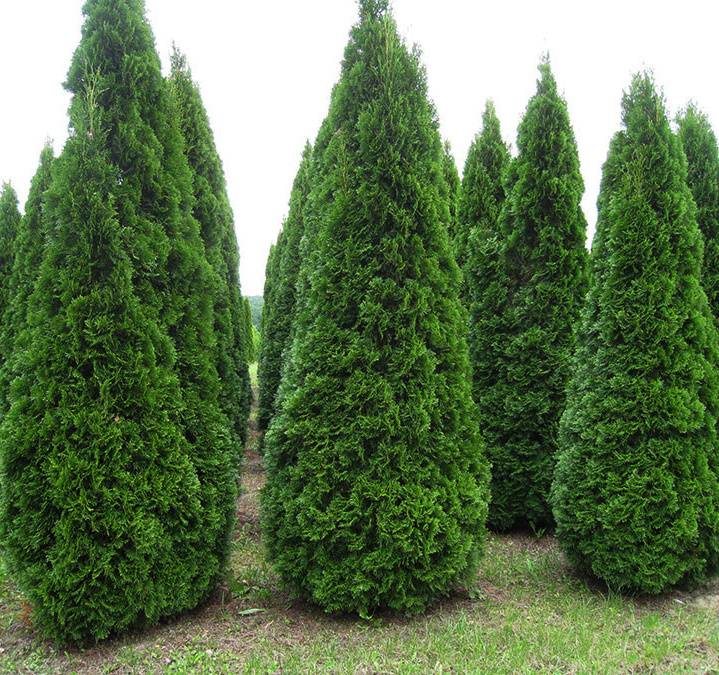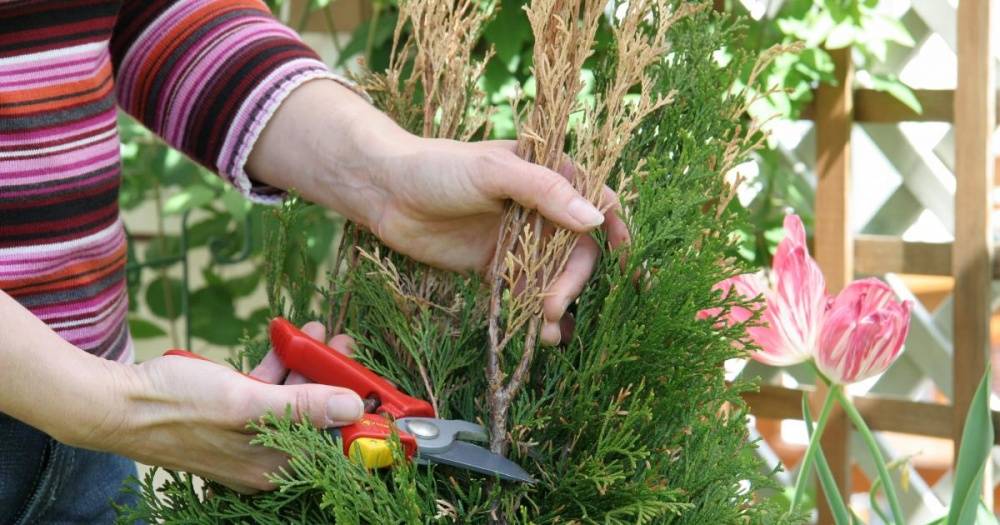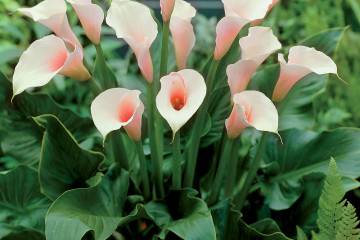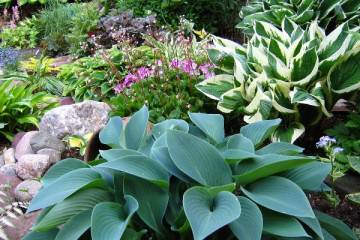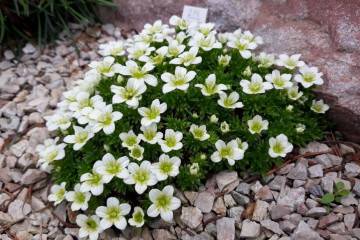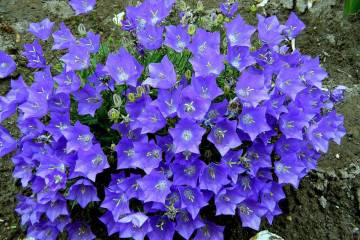Thuja in Siberia - planting and care, varieties for Siberia
Content:
Thanks to the work of breeders, the inhabitants of Siberia can grow beautiful needles on their plots. The popularity of coniferous shrubs is associated with unpretentious care, slow growth (trouble-free crown formation) and decorativeness. Also, evergreens are successfully combined with other decorative plantings.
Thuja in Siberia: planting and care
Frost-resistant varieties do not differ in appearance from their southern brothers. Tui have different colors, crown shapes and sizes. A distinctive feature in the care is the careful preparation of the site for planting and wintering.
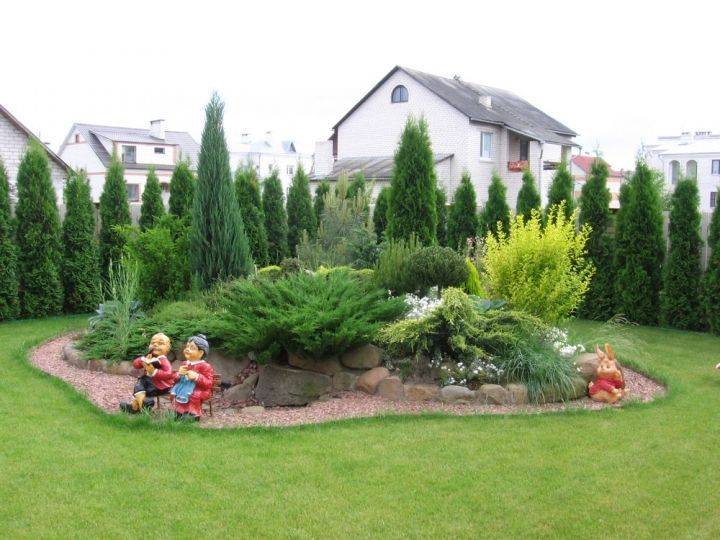
Wonderful decorative fences, compositions of shrubs and flowers with the participation of thuja can decorate any garden
Thuja varieties for growing in Siberia
Varieties of western thuja are considered the most frost-resistant and easy to care for. Subspecies vary in color of needles, size and shape of the crown.
Evergreen seedlings are best purchased in the region where they will be planted in the future. Home specimens have already adapted to the climate and will take root well in a new place.
Frost-resistant varieties of thuja for Siberia
Varieties resistant to severe weather conditions:
- an egg-shaped shrub of the Wagneri variety is convenient in that it does not need a spring crown molding. The size of an adult shrub reaches up to 3 m in height and half as much in breadth. The cultivar requires good lighting and moisture during development;
- the Danika variety is striking in its decorative effect. A downed bush up to 60 cm high grows slowly (5 cm per year), has a spherical shape. Successfully participates in garden compositions;
- you can forget about Kholmstrup after landing. Care requirements end with a standard set. But the decorativeness of the coniferous plant is at a height. The shape of the crown is columnar, the rich green color will not turn yellow over time, and the curly needles will add density;
- the Smaragd variety has a pyramidal crown shape, bright green needles. A dynamically growing tree needs to be molded every year. An unkempt thuja can grow in breadth by 2 m in diameter. Annual growth reaches up to 20 cm.
Problems when caring for thuja outdoors
The problems that a breeder of coniferous crops may face are most often associated with incorrectly selected information on care and the application of erroneous tips to the plant. Improper care leads to the following problems:
- loss of decorativeness - wilting, yellowing of needles, growth arrest;
- painful appearance after wintering and long recovery;
- plant diseases;
- damage by pests.
An improperly chosen landing site can also provoke illness or loss of decorativeness. Too clay and moist soil without drainage will promote the development of fungi and rot in the roots.The bright sun at noon without shading will cause the needles to turn yellow.
Poor preparation for winter entails possible loss of the root system. It will take a long time to recover, thuja can stop the growth of greenery. In Siberia, a lot of snow falls during the winter; an unprotected tree can lose its crown or a large number of branches.
Diseases and pests occur for various reasons. Poor grooming is the main one. Regular treatments with special products will protect both young plantings and mature plants.
Basic rules for caring for thuja
Conifers do not need daily care, but you need to pay attention to the tree. The more care is shown for a young seedling in the first 2-3 years, the more carefree its further development will be. Planting, wintering, pruning are the main directions in caring for conifers.
Site selection and soil preparation
The light-loving thuja will prefer to hide its needles from direct sunlight at noon. Partial shade or partial shading will save it from moisture loss and preserve its natural color.
The growth of thuja slows down the stagnation of water in the soil. A good layer of large pieces of broken brick will be excellent drainage and protect against clay soils, groundwater and seasonal excess moisture.
Landing
The Siberian climate may not spare the autumn seedling, therefore, it is better to plant young trees in spring. During this time, the root system will get stronger and gain enough moisture for wintering.
For disembarkation, it is necessary to prepare a landing pit. Cover the bottom with drainage (broken brick, large expanded clay), cover the top with compost. Fill the roots with soil mixture, without freeing them from their native land. Be sure to cover the top with a layer of mulch from dry grass, pine bark or sawdust. Peat can also serve as mulch for conifers.
After planting, the seedling is watered, the soil is trampled down and poured to remove excess air.
Shelter for the winter
Wintering for frost-resistant crops is more aimed at properly preparing for low temperatures and protecting the crown.
In the autumn, it is necessary to water the thuja abundantly. Abundant moisture protects the roots from frost. After abundant watering, the soil is loosened, but not deeper than 7 cm. Before persistent frosts, the soil around the trunk is mulched with peat, dry foliage, and compost.
Young shrubs planted this spring need additional shelter. They do not have enough needles to retain moisture, the seedling should be protected from direct sunlight.
Mature shrubs need a secure frame for wintering. The main purpose of such structures is to keep the crown from snow, wind and ice. Broken branches not only spoil the look, they are a supply of food and moisture. This can affect the condition of the tree after winter.
Pruning thuja in spring
Spring pruning occurs in late spring - early summer. It is necessary to catch the moment when the buds have just blossomed and young shoots have appeared. Having a general picture of the future shape of the crown, you can easily correct it. Varieties such as Wagneri and Columna have an ideal crown shape that they retain throughout life. But thuja Brabant is loose, and spring pruning will help increase the volume of greenery.
Too dense varieties are pruned to thin out the needles. Good ventilation of the crown is the prevention of pests and fungal diseases. Too elongated shoots can, on the contrary, be forced to grow in breadth by pruning.For this, the branches are cut to 1/3 of the length under the bud.
All dry, damaged and diseased shoots are cut every spring to maintain healthy growth. It is important to prune on a fine day, preferably in the morning. So the wounds on the cuts will have time to dry out and heal. The instrument must be sharp and sterile. After pruning, the tree is watered and after a while fertilizer for conifers is applied according to the description on the label.
Conifers in garden plots can add bright accents to general compositions. In a single performance, these are real beauties. Tui is one of the easiest evergreens to care for. Taking care of an emerald tree is easy even for a novice gardener.
